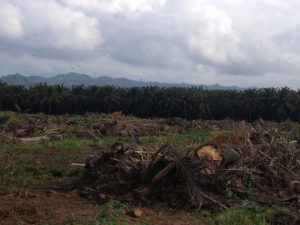By Dr Tim Cadman
Griffith Law School
What is Inclusiveness?
Simply put, inclusiveness can be understood in terms ofaccessandweight. Access refers to making sure all stakeholders are admitted into venues of power where decisions are made, while weight refers to ensuring their input is balanced in relation to other interests.
Financing inclusive sustainable development of palm oil via such funds as the Tropical Landscape Finance Facility, the GEF and the GCF, or via private finance, requires standards of good governance to ensure investment is effective in terms of implementation, is free from corruption, includes those targeted by the investment, and has mechanisms for equitably sharing the benefits of any goods and services generated by projects on the ground.
If communities are simply included in existing industrial models of palm oil cultivation there will most likely continue to be negative impacts on the ground, as these models are based on profit maximisation, and cost externalisation —which usually means plantation expansion at the expense of forests and peatlands.
Examples from the field
Over the past ten years I have been involved in working with local communities and other stakeholders to create participatory governance standards for sustainable development programmes and projects in a number of developing countries. While the emphasis was on the sustainable use of forest resources, this is often interlinked with other land uses, most notably palm oil. Our investigations revealed that almost all local communities engage in subsistence farming, and many are smallholders, and that all communities have very specific needs around how to be included in development initiatives. One size does not fit all.

In Papua New Guinea for example, where forests are being converted for palm oil, communities were concerned about ensuring that local populations and marginalised groups were involved in land use management and planning from the very beginning of any initiative, especially people with disabilities, and that women be accorded equal status with men. Stakeholders also were keen to ensure that local organisations were also involved in project implementation. While these are specific examples, they reveal how local communities want local groups involved, and want to see equality of participation for all.
Our experience shows that all communities are concerned about their impacts on the environment and have the answers to these problems: they just need to be allowed to include them in management activities — and be sufficiently resourced to implement them. That’s the real challenge.
Summary of issues
- Local communities need to be involved in formulating the necessary actions required to solve problems and change behaviours around land-use and help formulate durable solutions.
- In the case of palm oil certification smallholders should not be seen as the ‘subjects’ of certification assessment, but primary actors, who have decision-making power. Only then will they embrace certification.
- Programmes aimed at improving the sustainability of palm oil production need to ensure that community participation is meaningful, rather than tokenistic, and that communities benefit from their involvement in terms of economic and social development more than they do from business as usual practices. Otherwise, smallholders will not change their behaviour.
Action points
- Companies should allocate their corporate social responsibility budgets to increasing the capacity of smallholders and local communities to participate in land-use planning and decision-making effectively. This applies also when it comes to developing contracts with local smallholders, and smallholder associations.
- Palm oil certification schemes need to move into the era of “certification 2.0” and involve smallholders in creating context-specific governance standards and indicators for sustainable management, in determining what benefit sharing arrangements and capacity-building are needed, and for communities to have a role in project implementation, and monitoring.
- Donors should only fund initiatives where there is evidence that local communities will be involved in decision-making and are resourced to do so. Otherwise they will simply be financing business as usual.
